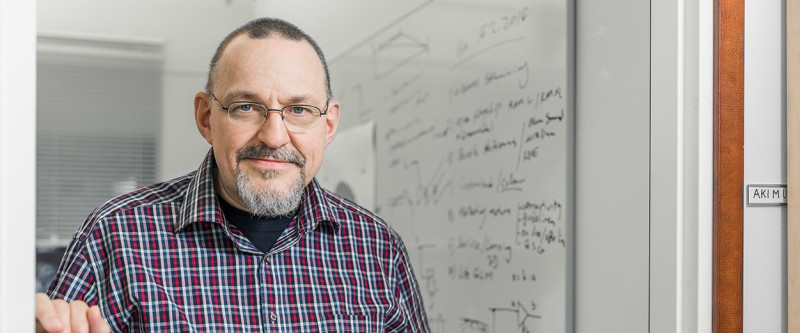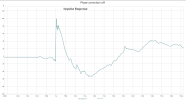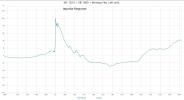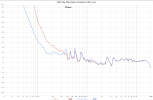Hey community,
I’m resetting my strategy for deploying multiple subwoofers in my setup. Information sources include fellow members' testing (
@Nuyes I measured 10 Subwoofers) and spreadsheets (
@sweetchaos Subwoofer Comparison). Also using Audioholics, Buttersworth, and Erin’s to identify those in my price and output ranges. Nuyes testing brought to my attention group delay and how varied it can be below 80hz. I really don't know anything about it and will certainly not be attempting to explain its significance. But it got me wondering at what point would measurements show "this is now a problem"? I have (tried) to understand posts and papers group delay that have been linked on other threads and I simply confidence in drawing my own conclusions. I did see one post on DIYAudio stating the ‘ideal’ is sub-one cycle at a given frequency. If true, the ideal group delays should measure less than:
20hz — 50ms
30hz — 33.33ms
40hz — 25ms
50hz — 20ms
60hz — 16.67ms
70hz — 14.29
80hz — 12.5ms
Ok, this is may not be the best rule of thumb and responders may quickly call out a 'general rule' error. If so, let's find something agreed upon to the best of our ability. Right now it's what I have found that I can run with.
I want to learn more.
So why am I asking for help with this subject and possibly making knowledgable people on the forum tired of beating a dead horse? I want to sell my current subwoofer to find a more affordable unit to be able to scale up (2-4 subs). My current SVS 3000 micro nails the form factor, but there are less expensive options - namely the Kali WS-6.2. If I could afford them, I would be looking at the Paradigm MilleniaSub, Sigberg Inkognito, or continue with more 3000 micros. I'm not looking for crazy output or sub-20hz output. I just want to get the most for my money and be done with it with as much peace of mind as I can knowing I made the most educated decision I could.
The Kali looks viable. But what about group delay for a ported subwoofer like this one? Looks like there is a direct correlation between ported subwoofers and higher group delays. I don't mind the look of the WS-6.2 because my intention is to conceal them. Output looks respectable based on Erin's video review I stumbled upon through thread
Anyone Tried Kali Audio WS-6.2 Subwoofer?. True it may not pass CEA-2010 below 25hz, and I'm ok with that.
20hz ≈ 45ms
30hz ≈ 42ms
40hz ≈ 26ms
50hz ≈ 16ms
60hz ≈ 12ms
70hz ≈ 10ms
80hz ≈ 9ms
Good, you just proved your own point, Justin. The Kali should fit the bill, so why post this at all? Glad you asked...
Presuming one cycle is the ideal, at what point would the group delay become audibly unacceptable? This isn't meant to put anything to bed, but to take my next subwoofer search and have a thread people can look back to in layman's terms, see how we got there, and what is reasonable and within an acceptable margin. Go easy on me.
Thanks!



